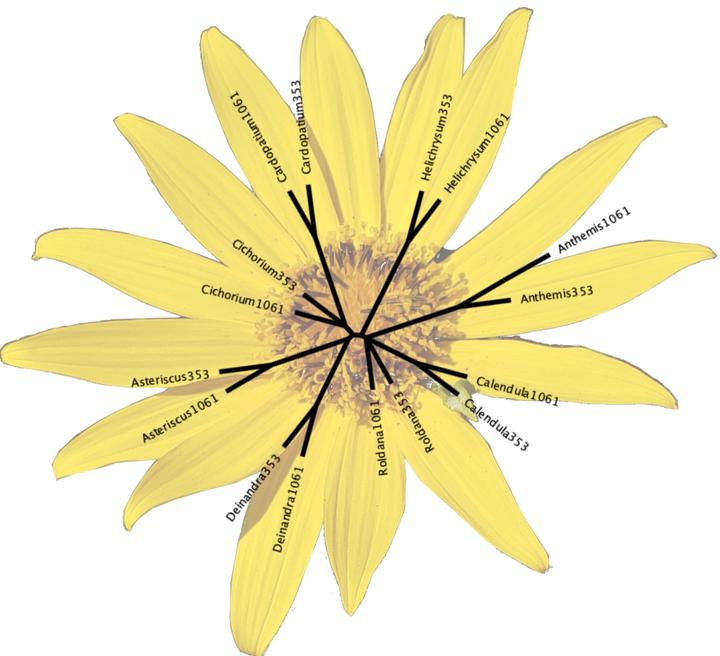Lineage‐specific vs. universal: A comparison of the Compositae1061 and Angiosperms353 enrichment panels in the sunflower family

Abstract
Phylogenetic studies in the Compositae are challenging due to the sheer size of the family and the challenges they pose for molecular tools, ranging from the genomic impact of polyploid events to their very conserved plastid genomes. The search for better molecular tools for phylogenetic studies led to the development of the family-specific Compositae1061 probe set, as well as the universal Angiosperms353 probe set designed for all flowering plants. In this study, we evaluate the extent to which data generated using the family-specific kit and those obtained with the universal kit can be merged for downstream analyses. We used comparative methods to verify the presence of shared loci between probe sets. Using two sets of eight samples sequenced with Compositae1061 and Angiosperms353, we ran phylogenetic analyses with and without loci flagged as paralogs, a gene tree discordance analysis, and a complementary phylogenetic analysis mixing samples from both sample sets. Our results show that the Compositae1061 kit provides an average of 721 loci, with 9?46% of them presenting paralogs, while the Angiosperms353 set yields an average of 287 loci, which are less affected by paralogy. Analyses mixing samples from both sets showed that the presence of 30 shared loci in the probe sets allows the combination of data generated in different ways. Combining data generated using different probe sets opens up the possibility of collaborative efforts and shared data within the synantherological community.